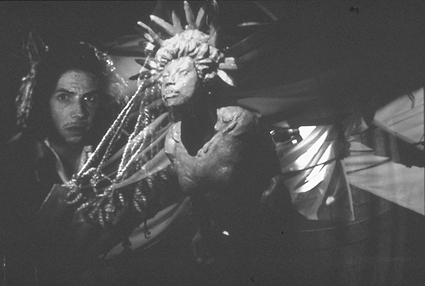 |
Gary Warner |
Three years after introducing itself as a museum uniquely predicated on the virtues of new media technologies, the Museum of Sydney is reviewing the engagement between the past and the new both here and overseas in a 2 day conference featuring international guests. Curated by Gary Warner, Director of CDP MEDIA (which specialises in multimedia projects for museums, galleries and the likes of the Botanic Gardens), SITE-TIME-MEDIA-SPACE, is billed as cross-disciplinary. It is broadly “intended to contribute to development of understanding and appreciation of the wider creative potentials offered by new media technologies.” More specifically, and this is the nitty gritty we fantasists want to hear, it will “encourage consideration of the ways in which digital media might augment exhibition practices or be employed to create entirely new forms of visitor experience and interpretive techniques.”
Even more interesting for artists is its promise that “(t)he core of the event will be an inspirational series of presentations from local and international curators, exhibition designers, media artists, filmmakers and other professionals at the leading edge of museum and technological endeavour.” I like “inspirational”. As a new site for the working artist, the modern museum places itself ahead of the graphic, scenic, sculptural and taxidemic arts of the past in its artistic appeal for the animator, imager, interactor, interfacer. And, doubtless, the conference will attract the museologist, for whom the sharply changing nature of the museum offers one of those historical moments of enviable perspective.
According to a draft statement about the conference, the internet and the world wide web have tended to favour certain developments in the museum—“collection management, promotion, publishing and communication”—“tending to preclude other applications of new media.” Alertness to “local imperatives” and “staff members’ special abilities and interests” and the prospect of “unusual, innovative, eccentric and specialist exhibition projects” are the new focus. A measure of the conference’s success will be the degree to which it conjures possible ways of telling history and its various and sometimes contradictory truths, and whether it affords sufficient kinds of (sometimes interactive) experience for the visitor to become, as Ross Gibson has put it, “a provisional historian.” (Metro, 100, Summer 1994/5)
The Bond Store, Museum of Sydney Ray Joyce
RealTime issue #26 Aug-Sept 1998 pg. 21
© Keith Gallasch; for permission to reproduce apply to [email protected]








 back
back